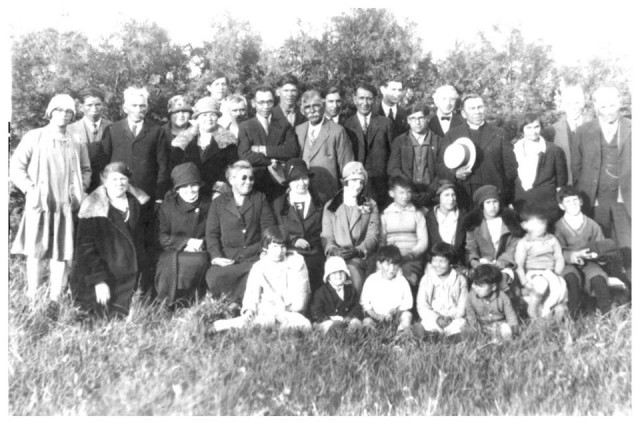
Our stories celebrate our heritage and identity as Chippewa people. They preserve and teach our Indigenous ways of knowing and knowledge for the future generations of Georgina Island. In the tradition of oral history over generations, our youth - in their turn - will carry on this legacy to protect and share our proud history and who we are as the Chippewas of Georgina Island.

Life on Georgina Island began in the early 1800’s. The Department of Upper Canada wanted to separate the Indians from the white settlements, putting them on reservations was a way of accomplishing this.
After a nomadic way of life they found it difficult to stay in one area. In 1826, camp meetings were held by the Methodist missionaries who worked Vigorously to convert Indians to Christianity. Schooling was encouraged and children were placed with mission families. They were trained to spread the Christian faith and were forbidden to practice their Native Teachings or to use their Native tongue. Boarding schools were to follow, taking children away from heart broken families.
In the late 1820’s, the Indian Department of Upper Canada began to relocate the Lake Simcoe Indians. The Indians were blamed for destroying wildlife so they were encouraged to farm.
Snake Island was the first island the Indians settled on in Lake Simcoe. With more pressure to farm, they moved to the larger and more isolated Georgina Island. Only a few remained on Snake Island. The population on Georgina Island in 1876 was 131. They gradually changed their lifestyles. Making the island their home.
About 1900 my grandfather built our log house. This is the warm loving home I spent my childhood in. My grandfather always won a prize for the best garden. Strawberries, raspberries and a variety of vegetables ensured enough food for the hard winters.
He rowed across the lake in a boat he had built. Every week the supplies were shopped for in the nearby towns. Hours were spent carving ax handles while my grandmother made beautiful baskets trimmed with sweet grass and porcupine quills. They would then take them to the villages and sell or trade them for food or clothes.
In the spring, maple syrup boiled vigorously in big black pots. Medicines were gathered in the woods. The women nursed the sick and delivered the babies.
“In 1961 Native people were finally able to vote in the Federal elections.”
We had an Indian Agent who looked after the affairs of our people. He always frightened me. Our men and women fought in the wars, some never returned. In 1961 Native people were finally able to vote in the Federal elections. They were also then allowed to bring alcohol onto the reserves. In the early 1950’s the telephone was brought to the Island by underwater cable, then hydro arrived in 1959.
Today we enjoy a new ferryboat and hover craft. Our revenues come from leased land on Fox, Snake and Georgina Island. We have an elected Chief and four councilors. Our Island membership is 600 with 155 members residing on our reserve. We enjoy a new Community Centre, Health Centre, United Church and a Public School. Classes are taught in Native language, art beadwork and traditional teachings. We have a ball team and a hockey team; we enjoy Powwows and Native dancing.
Self-government is in the future. Our way of life is changing, we hope and pray it’s for the better.
Comments are closed.
 Chippewas of Georgina Island
Chippewas of Georgina Island